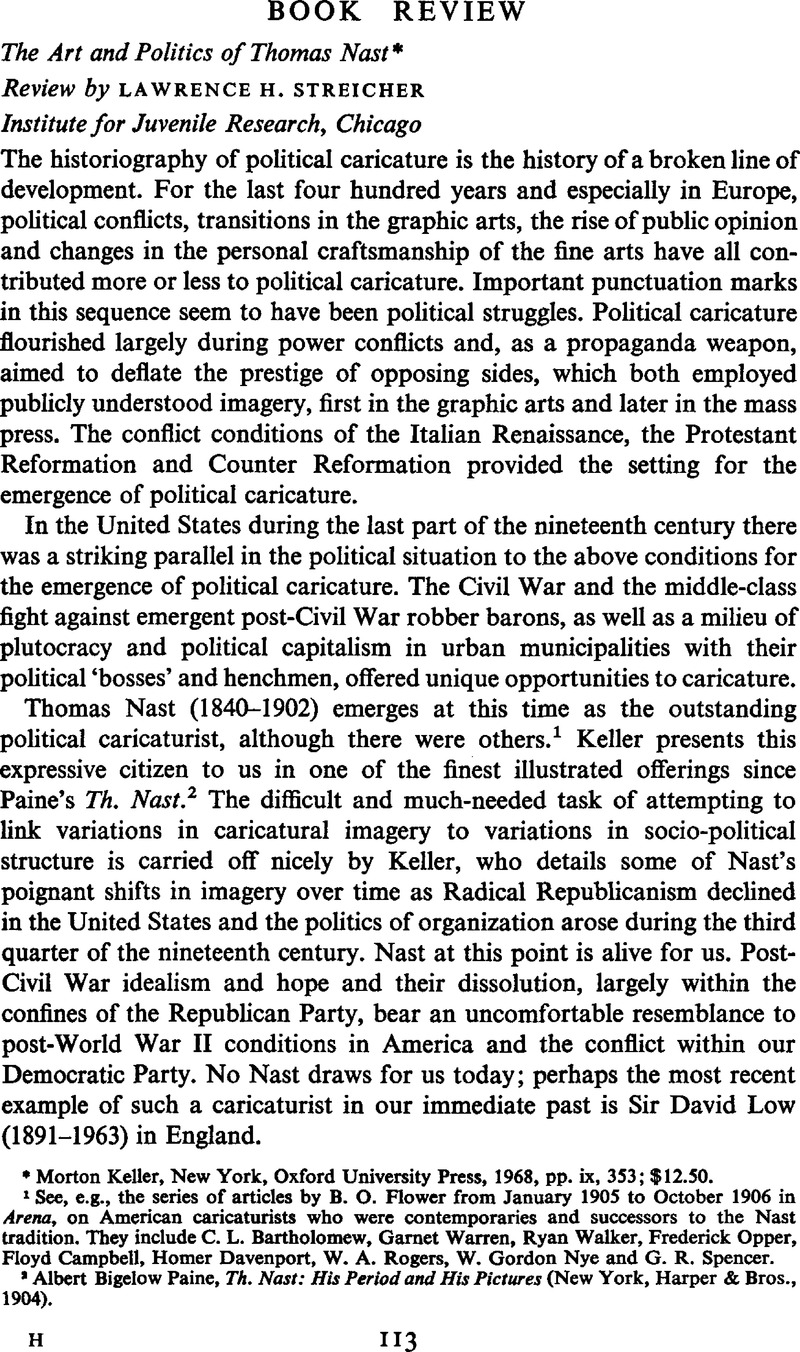No CrossRef data available.
Article contents
The Art and Politics of Thomas Nast
Published online by Cambridge University Press: 03 June 2009
Abstract

- Type
- Book Review
- Information
- Copyright
- Copyright © Society for the Comparative Study of Society and History 1969
References
page 113 note * Morton Keller, New York, Oxford University Press, 1968, pp. ix, 353; $12.50.
page 113 note 1 See, e.g., the series of articles by B. O. Flower from January 1905 to October 1906 in Arena, on American caricaturists who were contemporaries and successors to the Nast tradition. They include C. L. Bartholomew, Garnet Warren, Ryan Walker, Frederick Opper, Floyd Campbell, Homer Davenport, W. A. Rogers, W. Gordon Nye and G. R. Spencer.
page 113 note 2 Paine, Albert Bigelow, Th. Nast: His Period and His Pictures (New York, Harper & Bros., 1904).Google Scholar
page 114 note 1 They included such men in Italy as Pier Leoni Ghezzi (1674–1755); in Holland, Romeyn de Hooghe (1648–1708); in England, William Hogarth (1697–1764), Thomas Rowlandson (1756–1827), James GiUray (1757–1815); Spain, Francisco Goya y Lucientes (1746–1828); France, Honore Daumier (1808–1879), Henri Monnier (1805–1877), J. T. Travies (1804–1859) and Charles Philipon (1806–1869).




